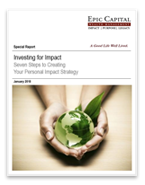Rebalancing Your Portfolio
Sep 14, 2022

Everyone loves a winner. If an investment is successful, most people naturally want to stick with it. But is that the best approach?
It may sound counterintuitive, but it may be possible to have too much of a good thing. Over time, the performance of different investments can shift a portfolio’s intent as well as its risk profile. It’s a phenomenon sometimes referred to as “risk creep,” and it happens when a portfolio’s risk profile shifts over time.
Balancing
When deciding how to allocate investments, many begin by considering their time horizon, risk tolerance, and specific goals. Next, individual investments are selected that pursue the overall objective. If all the investments selected had the same return, that balance – that allocation – would remain steady for a time. But if the investments have varying returns, over time, the portfolio may bear little resemblance to its original allocation.
How Rebalancing Works
Rebalancing is the process of restoring a portfolio to its original risk profile. There are two ways to rebalance a portfolio.
The first is to use new money. When adding money to a portfolio, allocate these new funds to those assets or asset classes that have fallen.
The second way of rebalancing your portfolio is to sell enough of the “winners” to buy more underperforming assets. Ironically, this type of rebalancing forces you to buy low and sell high.
As you consider the pros and cons of rebalancing, here are a couple of key concepts to consider. First, asset allocation is an investment principle designed to manage risk. It does not guarantee against investment losses. Second, the process of rebalancing may create a taxable event. And the information in this material is not intended as tax or legal advice. It may not be used for the purpose of avoiding any federal tax penalties. Please consult a professional with legal or tax expertise regarding your situation.
Periodically rebalancing your portfolio to match your desired risk tolerance is a sound practice regardless of the market conditions. One approach is to set a specific time each year to schedule an appointment to review your portfolio and determine if adjustments are appropriate. If you would like to learn more about this or other investment strategies please contact Epic Capital Wealth Management.
For more insights and resources, be sure to sign up for our Weekly Market Commentary. Follow our YouTube channel where we regularly post our Epic Market Minute videos. Follow us on LinkedIn, or like us on Facebook. And as always, please don’t hesitate to reach out to a dedicated service professional at Epic Capital.
More Insights
April showers came a month early as stocks fell in March. Tariffs were the primary cause of the market jitters, although that uncertainty became too much for markets to shrug off once economic data started to weaken.
A successful investor maximizes gain and minimizes loss. Though there can be no guarantee that any investment strategy will be successful and all investing involves risk, including the possible loss of principal, here are six basic principles that may help you invest more successfully.
Losing a spouse is a stressful transition. And the added pressure of having to settle the estate and organize finances can be overwhelming. Fortunately, there are steps you can take to make dealing with these matters less difficult.
Families are one of the great joys in life, and part of the love you show to your family is making sure that their basic needs are met. While that’s only to be expected from birth through the high school years, many households are helping their adult children well into their twenties and beyond at … Continue reading “Retirement and Adult Children”
Life insurance can be an excellent tool for charitable giving. Not only does life insurance allow you to make a substantial gift to charity at relatively little cost to you, but you may also benefit from tax rules that apply to gifts of life insurance.
Services
Epic Capital provides the following comprehensive financial planning and investment management services: Learn More >


 Top of Page
Top of Page











